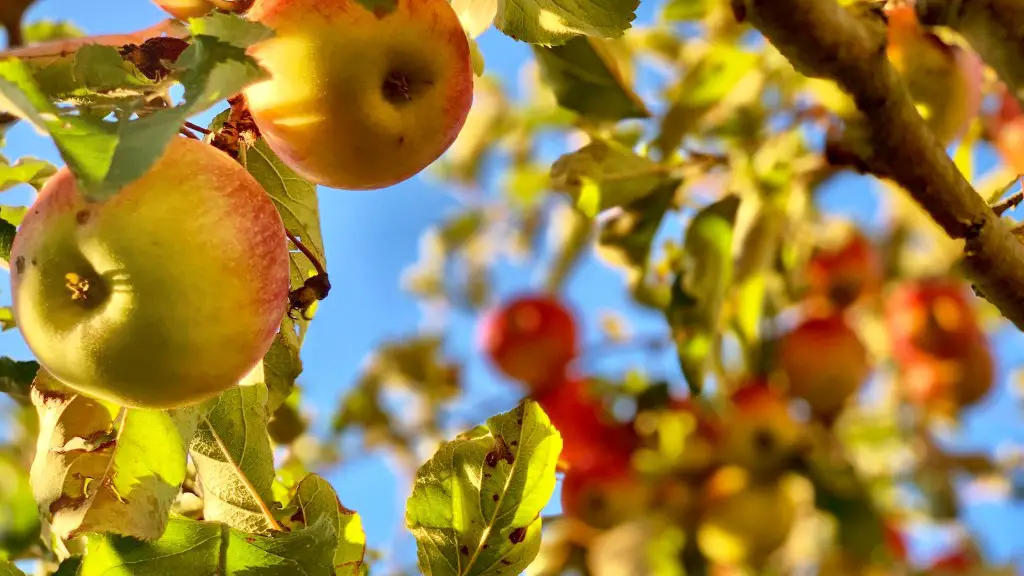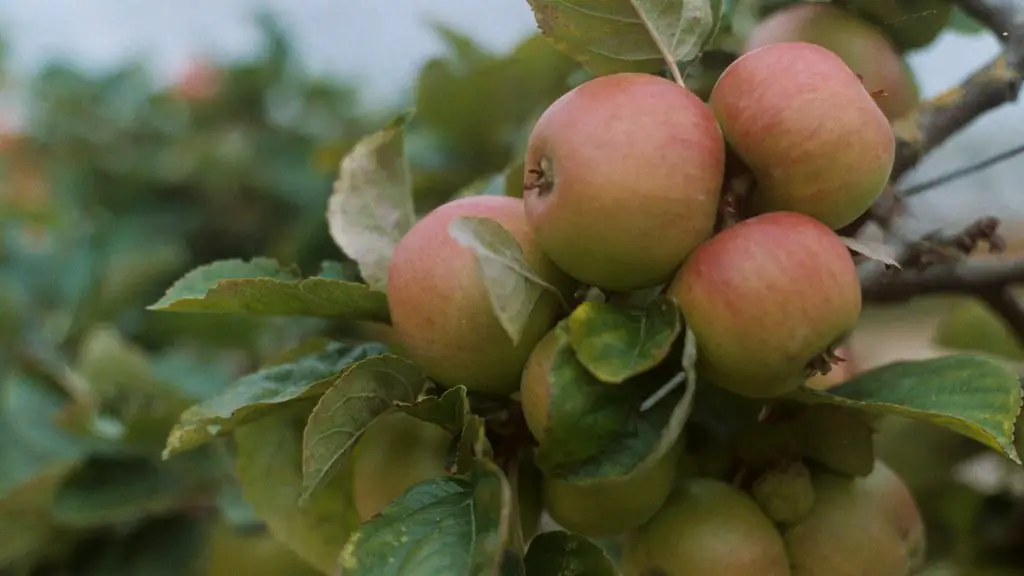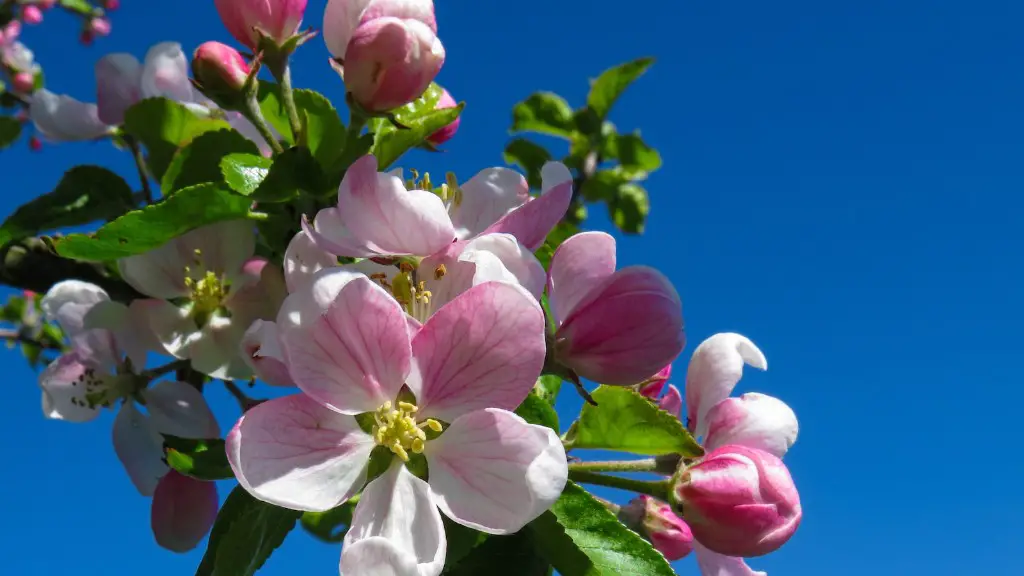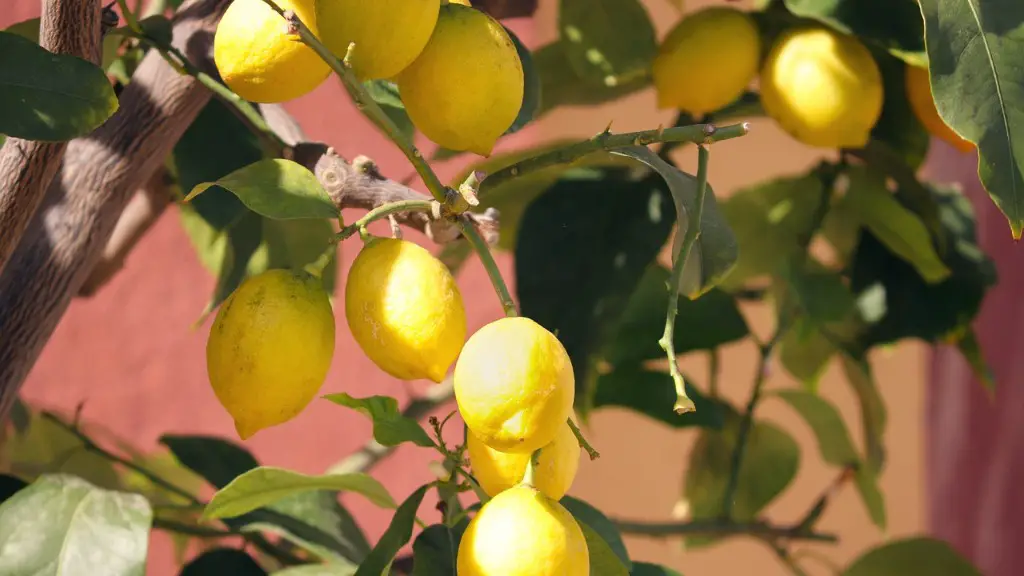Growing an apple tree from seed is a fun and rewarding experience. With a little patience and the proper care, your tree will provide you with fresh apples for years to come. Here are a few tips to get you started:
1. Start with a fresh apple. Eating the apple is optional, but be sure to remove the seeds from the core.
2. Soak the seeds in water for 24 hours. This will help to break down the apple’s natural seed coat.
3. Plant the seeds in moist, well-drained soil.
4. Keep the soil moist and fertilize regularly.
5. Once the trees reach 12-18 inches tall, they can be transplanted to a permanent location.
6. Prune and thin the trees as needed to promote healthy growth.
With a little TLC, you’ll soon be enjoying fresh apples from your very own tree!
First, obtain some apple seeds from a ripe apple. Next, clean off any flesh that is still clinging to the seeds and then allow them to dry for a few days. Once the seeds are dry, plant them in a pot filled with potting soil and water them well. Place the pot in a sunny spot and keep the soil moist. In about 6-8 weeks, the seeds should germinate and young seedlings will begin to grow. Once the seedlings are about 6 inches tall, transplant them into individual pots filled with potting soil. Allow the seedlings to grow in the pots for one more year before transplanting them into the ground in an area that receives full sun.
How long does it take for an apple tree to grow from a seed?
It will be between 7 to 10 years before you’re able to tell if your tree will have good fruit. Also, it takes a long time to grow an apple tree from seed. Keep this in mind when planting your tree.
It is possible to grow an apple tree from an apple seed. However, in most cases, apple trees don’t come true from seeds. For example, a seed taken from a Red Delicious apple will not produce a Red Delicious apple tree. Seedling apple trees are genetically different and usually inferior to the parent tree.
Is it easy to grow an apple tree from a seed
Apple seeds are easy to grow at home with the proper preparation, and seedlings are often more vigorous than their grafted nursery counterparts. Give an apple tree seedling 3-4 years, and it’ll catch up to and pass a potted transplant in size. From there, you have a tree that may bear for centuries.
If you want to grow an apple tree from the seeds inside the fruit you bought on your last grocery run, it’s not as simple as just scattering them across the ground in your yard. You’ll need to take care of the tree and be patient, but it is possible to cultivate your own fruit-producing tree.
Do you need 2 apple trees to produce fruit?
Apples are self-unfruitful, which means that they need to be cross-pollinated in order to produce fruit. Plant at least two different apple tree varieties within 50 feet of one another for a good fruit set. Some apple varieties, such as Golden Delicious, will produce a crop without cross-pollination from a second variety.
We need to have at least 3 dozens of apple seeds, because on average, only 1 out of 4 seeds will germinate and will manage to develop into a young tree finally. We first let the seeds dry and then we carefully wrap every 2-3 seeds into a wet towel.
What is the best month to plant apple seeds?
If you live in a colder climate with all four seasons, then your best bet for when to plant apple trees is in early spring once the ground thaws But if you’re in an area where the ground doesn’t freeze in the winter, then you’ll want to wait until early fall for when to plant apple trees and thus avoid a cruel summer.
Apple seeds need a period of chilling, or stratification, before they begin to sprout. Place the container in the refrigerator for at least two to three weeks – even up to a month or more. Then watch and wait. When seeds begin to sprout, carefully transfer them to pots filled with good potting mix.
Will an apple tree grown from seed produce fruit
It takes about 7 to 10 years for an apple tree grown from seed to produce fruit. This is because the tree needs to mature before it can produce fruit. However, if you are lucky, you may be able to tell if the tree is going to produce good fruit after a few years.
Apple trees need another variety of apple tree close by in order for the bees to pollinate the flowers and produce apples. There are some self-pollinating apple tree varieties, but they are not as common.
Can you grow an apple tree indoors?
Fruit trees can most certainly be grown indoors! However, for the best results it is recommended that you purchase dwarf varieties and the most mature trees available. These will fruit much faster than younger trees and will be a better size for indoor growing. Remember that most fruit trees need bright, full sun for at least 6-8 hours a day all year in order to produce fruit.
To ensure your trees grow quickly and remain healthy, follow these important tips:
-Chill hours are crucial for apple trees; they need hundreds of chill hours per season to produce fruit.
-Water young trees deeply and regularly; they require 2 inches of water per week.
-Apply mulch around the tree to help retain moisture and control weeds.
-Prune trees regularly to encourage new growth and remove any dead or diseased branches.
Should I dry my apple seeds before planting
To germinate apple seeds, first let the seeds dry out for 3-4 weeks. Set the seeds on a piece of wax paper, and roll them over every day or 2. After a month or so, the seeds lose that dark shine and get a lighter dryer look. This is a good indication the seeds have dried well.
Apple seeds can be a little tricky to get started, but with a little patience, you can grow your own apple tree from seed. Soak the seeds in a bowl full of cool water for an hour. This will help to soften the hard outer shell of the seed. Use as many seeds as you have as the germination rate is only likely to be a third to half of them so they aren’t all going to sprout. Plant the seeds about an inch deep in a pot filled with potting mix. Keep the soil moist but not wet and place the pot in a sunny spot. In a few weeks, you should see little sprouts poking through the soil. Once the seedlings are a few inches tall, you can transplant them into your garden.
What is the easiest apple tree to grow?
The Fuji apple is a popular variety of apple that is grown in many backyard apple trees. These apples are easy to grow and produce sizeable fruit that is sweet and juicy with a crisp bite. Although Fuji apples brown easily, they have a long shelf life compared to other varieties.
One of the interesting things about trees is that many of them are hermaphroditic, meaning that their flowers contain both male and female reproductive parts. Other species have male trees and female trees, which you can tell apart by looking at their flowers. The male reproductive parts are the pollen-laden stamen, while the female parts are the egg-holding pistils.
Conclusion
To grow an apple tree from seed, you will need to start with a fresh apple seed. You can purchase apple seeds from a nursery or online retailer. Fill a seed tray or pot with moist potting mix and bury the seed about 1/2 inch deep. Place the seed tray or pot in a warm spot with indirect sunlight and keep the soil moist. Once the seed germinates, transplant it to a larger pot or outdoor planting bed.
Assuming you would like tips on growing an apple tree from a seed:
One way to grow an apple tree from a seed is to start by stratifying the seed. This can be done by putting the seed in a container with moist sand and peat moss and keeping it in the fridge for two to three months. Another method is to plant the seed in a pot filled with potting soil in the fall and keeping it outdoors until spring. Once the seed has germinated, it can be transplanted to a sunny spot in the yard.





